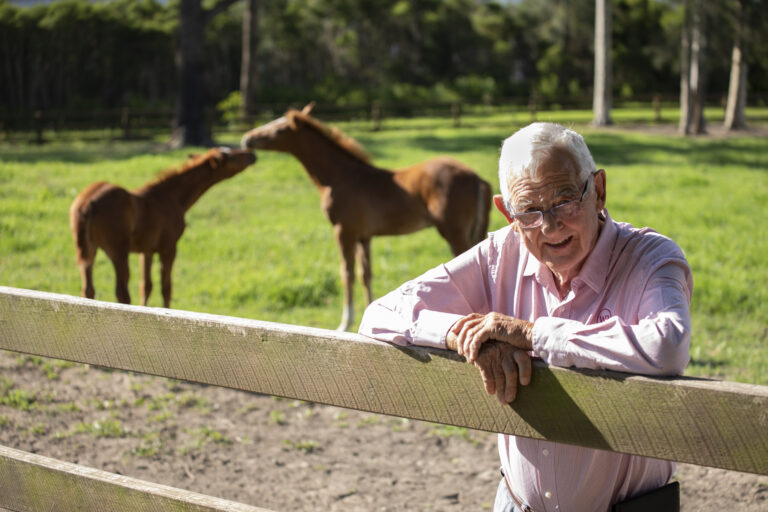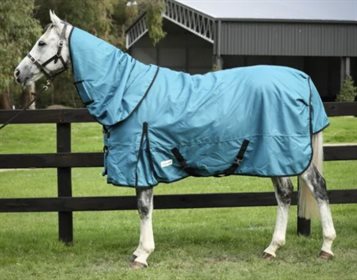Treating gastric ulcers
Equine gastric ulcer syndrome (EGUS) is a very common disease in horses. Recent research has highlighted a range of factors that are important to consider when treating EGUS in order to get the best possible response to treatment.
Before treating
Before treating a horse for EGUS it is important to recognise that, depending on the clinical signs present, a range of diseases should be considered and that it is important to seek veterinary guidance. For example, poor appetite and unexplained weight loss are two of the most common clinical signs of EGUS, but they are not specific for EGUS and a range of other diseases such as dental disease, parasites or underlying illness should also be considered. Similarly, poor performance and behavioural changes are common complaints from owners of horses with EGUS, but issues such as orthopaedic or muscular disease, or sand colic, can cause identical clinical presentations. Considering this, it is essential that you consult with your veterinarian prior to treatment.
Is gastroscopy essential?
Gastroscopy remains the only method of definitively diagnosing EGUS. It is also a useful tool for distinguishing between squamous (ESGD) and glandular (EGGD) disease. This distinction is important as the treatment regimens for the two conditions varies, as does the emphasis on specific management changes to prevent recurrence.
UNDERSTANDING THE SUBTYPES OF GASTRIC ULCER (read the PDF)
Where gastroscopy is not available or feasible, then a treatment trial with omeprazole can be used to help establish a diagnosis. Prior to attempting a treatment trial consideration should be given as to whether ESGD or EGGD is more likely in the individual horse with the treatment trial adapted accordingly.
RISK FACTORS FOR GASTRIC ULCERS IN HORSES (read the PDF)
A positive response to a treatment trial is typically seen within 5-7 days. When this occurs, treatment should be continued as per veterinary instructions. Where no response to the treatment trial is observed other underlying diseases should be considered. However, it is important to keep in mind that not all horses with EGUS, especially those with EGGD, will respond within the 5-7 day period. If EGUS is still considered likely, then gastroscopy should be performed to confirm the diagnosis.
How do I maximise the treatment response?
The mainstay of treatment for ulcers continues to be omeprazole, which is available only from veterinarians. Until recently, there hasn’t been much thought as to how we can optimise a horse’s response to omeprazole therapy. However, recent research has highlighted several factors that can greatly impact the efficacy (effectiveness) of this medication. Most importantly, it has been recognised that the presence of food in the stomach will significantly decrease the absorption of omeprazole, and therefore how effective it is at treating gastric ulcers.
Considering this, current recommendations for the administration of omeprazole are as follows:
1. Withhold feed from 10pm the night before, or limit evening feeding so that the evening meal is consumed by 10pm.
2. Administer omeprazole orally in the morning (after 8 hours off all feed).
3. Feed 60 minutes later. The feed at this time should consist of 1-2 large flakes of lucerne hay OR a highly palatable roughage substitute, followed by concentrate feeding (if necessary).
Horses naturally fast overnight and this approach simply prevents the horse from eating in the morning before the medication is given, allowing more of it to be absorbed. Once treatment has finished, continuous access to roughage is recommended to reduce the risk of ESGD.
What now?
Once the treatment course has been completed, the decision whether to continue with omeprazole as a preventative depends on the management of other risk factors in the individual horse. For ESGD, providing continuous access to multiple sources of roughage and the feeding of high fat/low carbohydrate diets are key management strategies to reduce recurrence. For EGGD, incorporating at least 2-3 rest days per week into the horse’s schedule and minimising behavioural stress are both important management strategies to reduce recurrence.
Where these risk factors can be managed and reduced, ongoing preventative therapy is less likely to be required. “Pulse” treatment may be recommended by your vet during high risk periods such as intense training and competition. In situations where it is more difficult to reduce the risk factors by implementing management changes, ongoing treatment with omeprazole should be considered under veterinary guidance. See here for more information on addressing risk factors for ESGD and EGGD.
Find out more about gastric ulcers in horses via the Virbac website.
This article was written in conjunction with Virbac.
READ THE LATEST NEWS ARTICLES HERE









